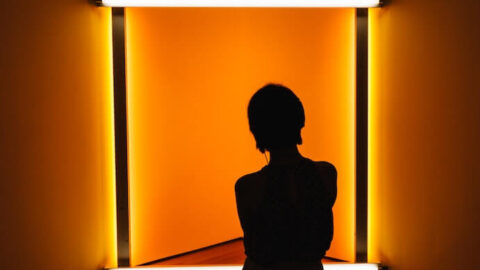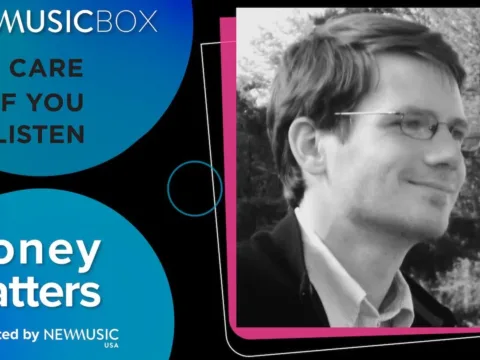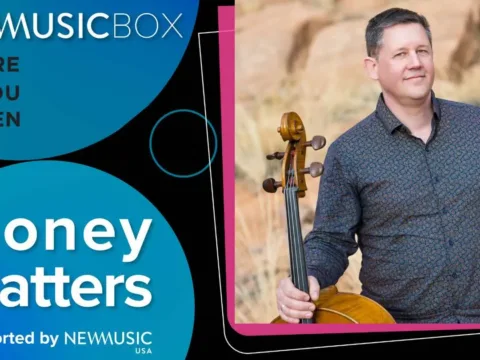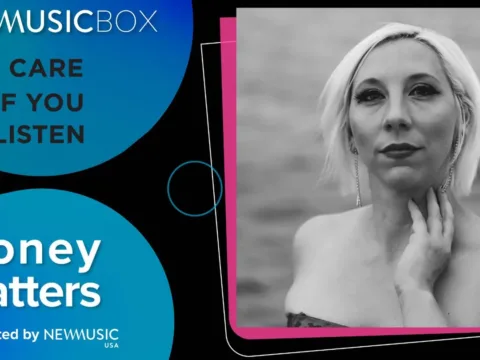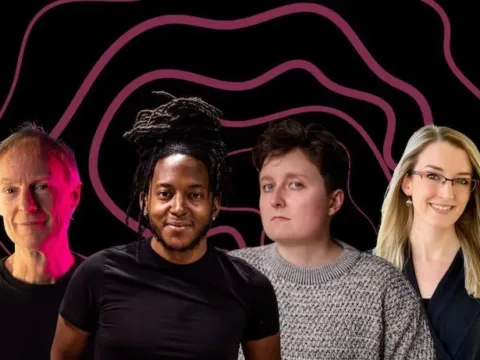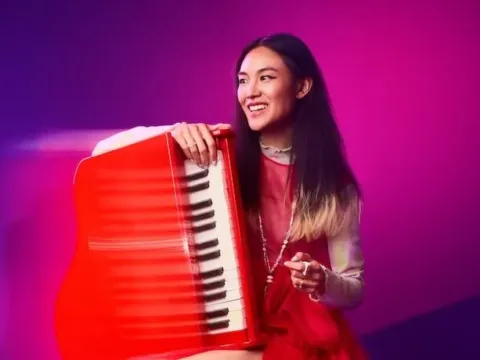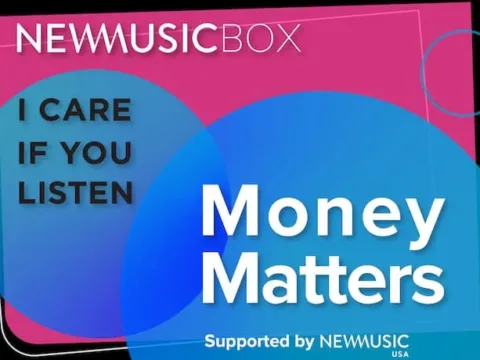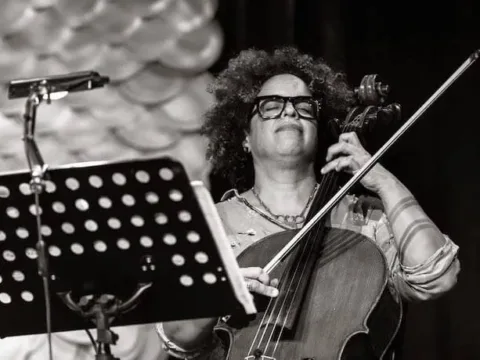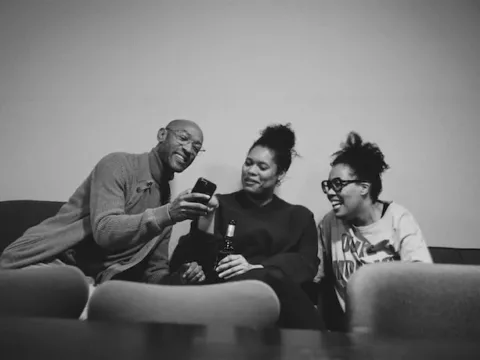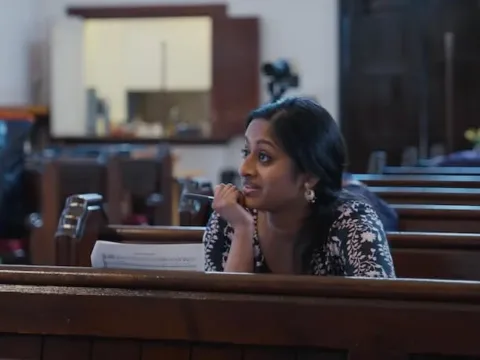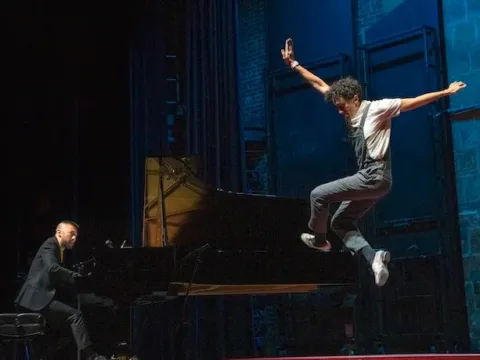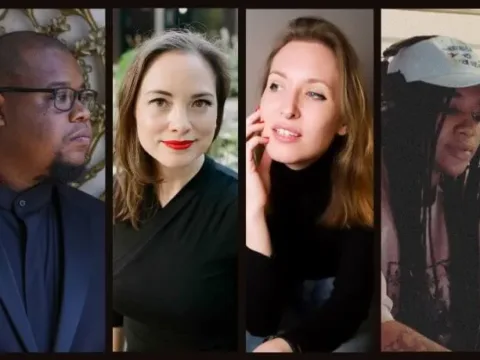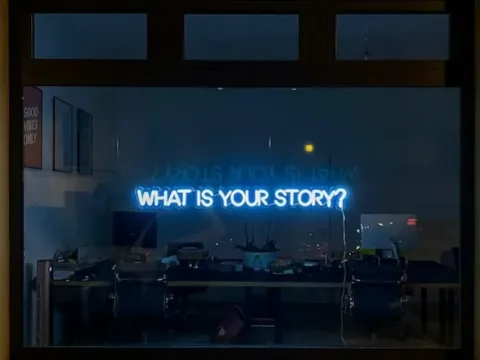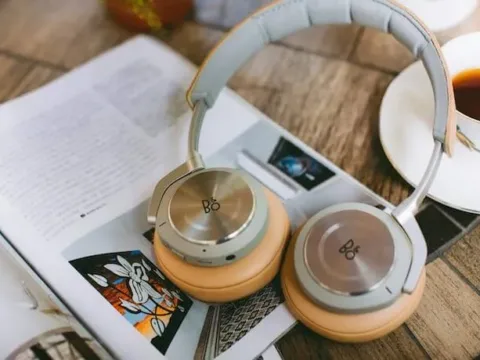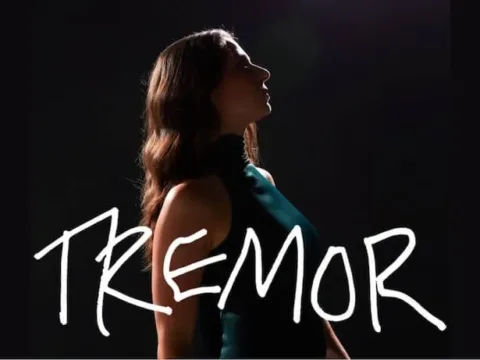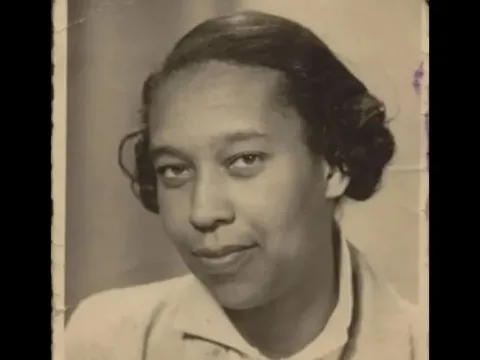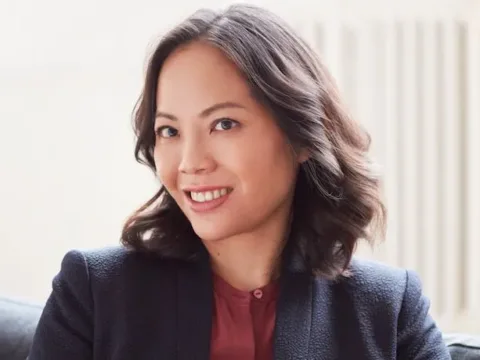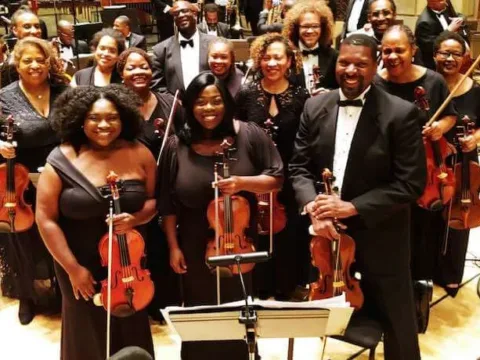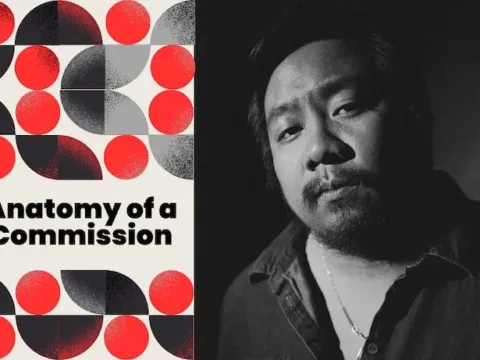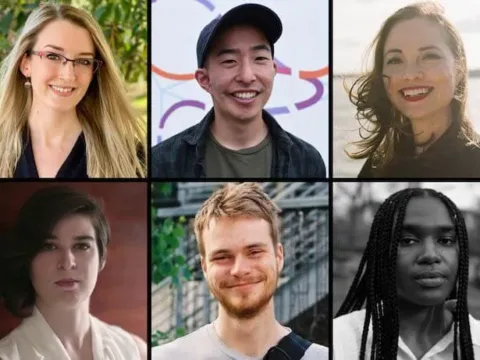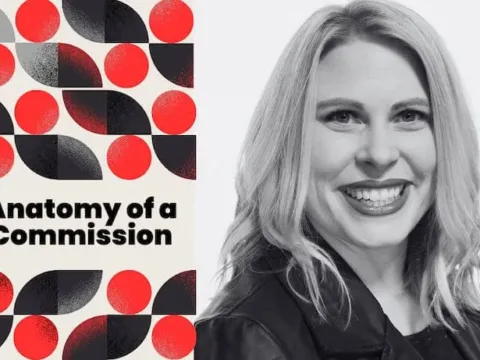“Casting Light” is a 10-part series that explores the often invisible inequities in contemporary arts spaces. Commissioned by ACF and I CARE IF YOU LISTEN, the goal of the series is to highlight the conversations that we need to be having more openly and transparently in order to build diverse, inclusive, and equitable artistic communities. Building on our commitment to anti-racism, a culminating collection of these articles and other resources will be shared for continued learning and dialogue.
From my earliest memories, I knew something was different about my brain. I counted every breath, every swallow, every blink. Letters were something beyond building blocks of language – they were beings with personalities and moralities. Every single action had crucial significance to me. As my anxiety grew, these actions gradually chained together into complex compulsions. Everything from the way I walked down the stairs to the way I used toilet paper seemingly had life-or-death consequences because I couldn’t shake off this crushing thought that someone would get hurt if I didn’t perform the compulsion.
I was finally diagnosed with obsessive-compulsive disorder (OCD) when I was a teenager. Eventually, I went to counseling, and through years of cognitive behavioral therapy and self-work, I learned how to control most of my compulsions so that they didn’t overtake my entire life anymore. I slowly began to appreciate my neurodivergent brain for its compassion and analytical prowess, but none of this was fool-proof. I still frequently struggle with persistent anxiety, and I still have to stop myself from creating new compulsions. After constantly being told my OCD embarrassed my family, I wrestled with a lot of shame over the existing compulsions that I still have. Living with OCD is a never-ending battle between embracing my neurodivergence and wishing it would all go away. There is no clear resolution – it’s a lifelong struggle.
From Peter Maxwell Davies’s Eight Songs for a Mad King to Ava Max’s “Sweet but Psycho,” the music world has always been entranced with portrayals of mental illness, often using external characters to capture extreme emotional spaces and expressive vulnerability. But what happens when music creators who struggle with their own mental health use their art to explore their personal narratives, rather than projecting these vulnerabilities onto characters?
Trauma porn: the capitalization of artists’ and community traumas to appease another person’s guilt or stoke their consumerist pleasure
For me, music provided a safe outlet to harness my compulsions and insecurities into something creative, and I eventually became a composer. But Western classical music has a dangerous history of linking creativity, mental illness, and genius worship. The most famous example is Beethoven, who discussed his depression and social apathy after losing his hearing in the Heiligenstadt Testament. When an entire field is centered around a prime “tortured artist,” connecting his genius to his pain, nearly every artist after faces an unspoken pressure that they must suffer to create. The artists themselves now become the performers of mental illness, emoting their trauma for the patronal gaze.
One of the first times I was transparent about my OCD was when I was writing my piece Quirkhead. Commissioned by Third Angle New Music and the Gabriela Lena Frank Creative Academy of Music (GLFCAM), I wanted to use the composing process to overcome the insecurity I held about my brain. I was initially terrified of opening up to the performers about a part of my identity I had kept hidden for so long, but Third Angle and GLFCAM provided such a supportive environment, and I could not have asked for a better workshop and premiere experience with them.
What I’ve never shared publicly, though, is how vulnerable this piece left me to exploitation afterwards. Several other organizations have since used Quirkhead to promote their own psychological initiatives without me having any prior relationship to them. One asked to film my confidential counseling sessions. Many arts organizations asked to use my piece to promote their mental health-themed concerts, often presenting a one-dimensional narrative – without my input – that if one just embraces their neurodivergence, magically all their problems go away. No one considered the intersection of race and mental health, or understood the huge difference in discourse between largely white American concert audiences and my own Indian-American family, including how I had to hide all public discussions about my OCD when I came home. Suddenly, I had lost control of my identity which I had fought so hard to protect.
Exacerbating this exploitation, there has been a significant push to include more BIPOC, underrepresented gender, disabled, and neurodivergent artists on concert programs – but whether these artists are given the freedom to explore the creative avenues of their choice is another question. The startling trend towards “trauma porn” – the capitalization of artists’ and community traumas to appease another person’s guilt or stoke their consumerist pleasure – reharms marginalized artists by forcing them to relive traumatic experiences and exploit their “otherness.”
Through the commissioning process, many arts organizations end up asserting the notion that all underrepresented artists must be traumatized and that their work is only valid if it centers their trauma. But if marginalized artists are not afforded the agency to explore their joy, their pain, and their holistic identity on their own terms, does that count as true representation?
[Tweet “If marginalized artists are not afforded the agency to explore their joy, their pain, and their holistic identity on their own terms, does that count as true representation?”]
I was recently commissioned by an ensemble to write a piece for a concert specifically themed around racism and social issues. I opted to write a piece rooted in textual double meanings to explore my immigrant family’s challenges around assimilation: wanting to understand quintessential elements of American culture while never fully being treated as Americans. When I sent my piece to the ensemble, the conductor initially wrote back saying my piece was too “shallow” for his virtually all-white group and mostly white audience and stated he was canceling my premiere. He assumed that my piece had little merit because it was seemingly not “traumatized” enough, without extending an opportunity for me to discuss what my work was about.
After I engaged in persistent dialogue with him, he later agreed to rehearse my piece. Eventually, the conductor grew to embrace my piece and apologized to me for not understanding my work earlier, and I was grateful that we could come to an identity understanding. But ironically, even though several BIPOC composers were commissioned as part of the initiative, the ensemble chose to give a white composer — whose work centered a very white conception of antiracism — the first and last word of the concert. Ultimately, the extreme effort I had to put in for them to take my work seriously cemented the impression that I was only valuable to them if I was traumatized, and that my trauma was only valid if it was digestible to a white audience.
Featured Work: Synthetic Violet by Ashlin Hunter, performed by Asher Wulfman, Elise Haukenes, Cameron Audras, and Myles Yeazell
What’s most concerning about this “trauma porn” trend is that after artists are pressured into discussing their trauma, there are few mental health resources to support them. For arts organizations, the focus is often on working towards a single performance, but artists must deal with the long-term psychological ramifications of creating a work. After writing Quirkhead, I fell into a long depressive episode that lasted well after the premiere. I worried I had left myself vulnerable by sharing my experiences too honestly, and I was frustrated that I couldn’t be a spokesperson for the OCD community. I was lucky to have had access to university psychological services at the time because many freelance artists do not even have health insurance to access those resources.
The greatest issue occurs when organizations make assumptions about an artist or audience member’s needs. Neurodivergence is a spectrum, and many people use highly different labels to describe their identity. (I myself sometimes have trepidations over using the “neurodivergent” label, and my own experience varies significantly from members of the autism, ADHD, and dyslexia communities.) Similarly, members from a particular racial, gender, or other identity community each have unique backgrounds. No two people have the same needs or listen, perform, or create in the same way.
From personal experience, I’ve learned the hard way how necessary it is to engage in dialogue with one’s collaborators and audience. So how can arts organizations, particularly those commissioning living artists, improve to ensure everyone’s safety and mental well-being?
Featured Work: The Tragedy of Hikikomori Loveless by AIYYER feat. Vicky Chow
First, ask yourself why you want to engage with a particular artist. Are you willing to give the artist the agency to create on their own terms (from conception to performance)? How can you foster a meaningful dialogue with the artist so that you can successfully meet their needs as well as your own needs as an organization?
Then consider the audience you are serving. What communities are you including, and how can you meet their needs? Partner with identity advocacy and mental health organizations to help provide input and resources to create a safe environment. Trauma and mental health needs are highly individual, so use both spoken and written trigger and sensory warnings so that they are accessible to visually impaired and non-native speaking audiences. Allow audience members to leave at any time, and make sure to communicate this openly. It is audience members’ basic human right to be able to revoke consent at any time.
After the performance, remember to check in with collaborators and audiences. Concerts are intense social experiences, and their emotional ramifications often last far beyond the performance. Ask the artists how they are feeling, and point them towards resources if they need support. (This is why partnering with advocacy organizations is so helpful!) Ask your audiences if the concert accommodations met their needs and how they can improve in the future.
There have been countless discussions on the sustainability of the arts in a rapidly changing world. Step one is protecting the health of its creators and audiences so that they don’t need to suffer to survive – they deserve to thrive.
I CARE IF YOU LISTEN is an editorially-independent program of the American Composers Forum, funded with generous donor and institutional support. Opinions expressed are solely those of the author and may not represent the views of ICIYL or ACF.
A gift to ACF helps support the work of ICIYL. For more on ACF, visit the “At ACF” section or composersforum.org.
